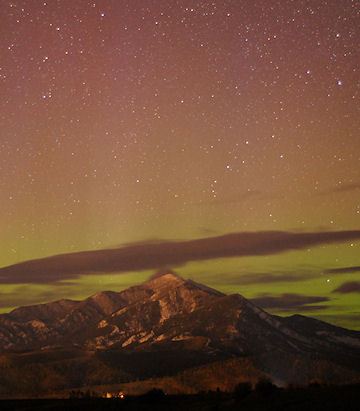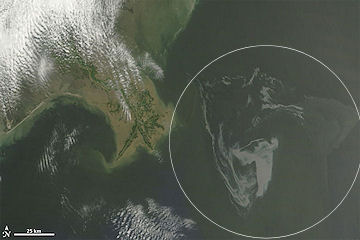NEW AND IMPROVED: Turn your iPhone or iPod Touch into a field-tested global satellite tracker. The Satellite Flybys app now works in all countries. | | | EMERGING SUNSPOTS: As of 1321 UT on May 3rd, there are four sunspot groups on the Earth-facing side of the sun: finder chart. The sun seems to be making up for two weeks of "blank days" in April. Readers with solar telescopes are encouraged to monitor developments. AURORAS INVADE THE USA: A high-speed solar wind stream hit Earth's magnetic field last night, sparking a geomagnetic storm (Kp=5-6) that lasted more than 15 hours. Northern Lights spilled across the Canadian border and were spotted in several US states. Joseph Shaw sends this picture from Bozeman, Montana: 
"The red auroras were just visible to the naked eye and easily captured by my Nikon D300," says Shaw. "Excellent treat!" NOAA forecasters estimate a 45% chance of continued geomagnetic activity over the next 24 hours. High-latitute sky watchers should remain alert for auroras. NEW: May 2010 Aurora Gallery
[previous Mays: 2008, 2005, 2004, 2003, 2002] [aurora alerts] GULF OF MEXICO OIL SPILL: Over the weekend, BP's oil spill in the Gulf of Mexico more than tripled in size to 4000+ square miles--about the same size as Chesapeake Bay. The slick is so big, it is visible from space: 
NASA’s Terra satellite captured this natural-color image of the expandiing slick near the Mississippi Delta on May 1st. The outskirts of the spill are now reaching sensitive Gulf shore wetlands where the ecological impact could be severe. According to some estimates, as much as 210,000 gallons of crude oil a day are leaking into the Gulf, so the slick is only going to grow larger. Satellite images of Earth are usually beautiful. This is a rare exception. Check NASA's Earth Observatory for updates from orbit. | 
